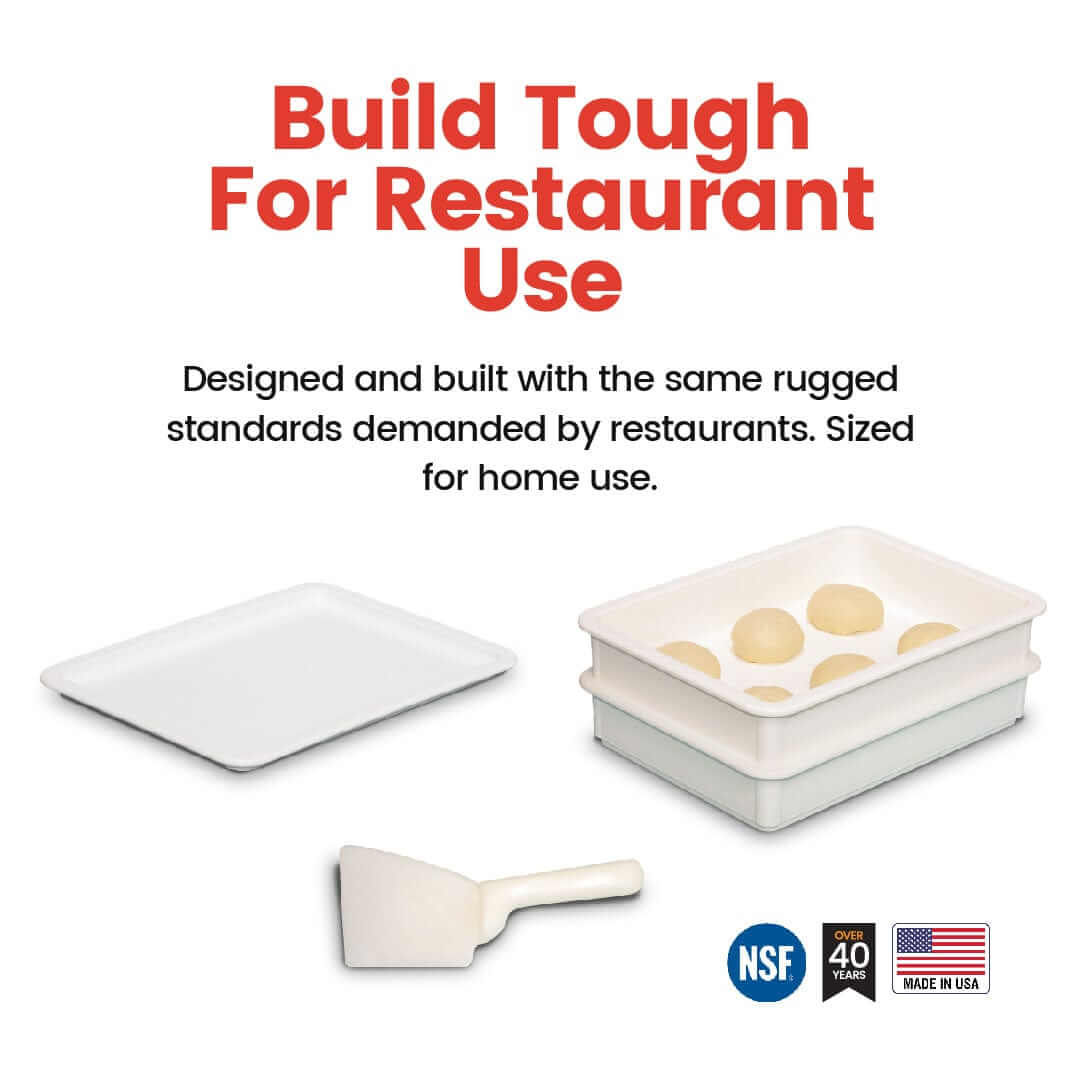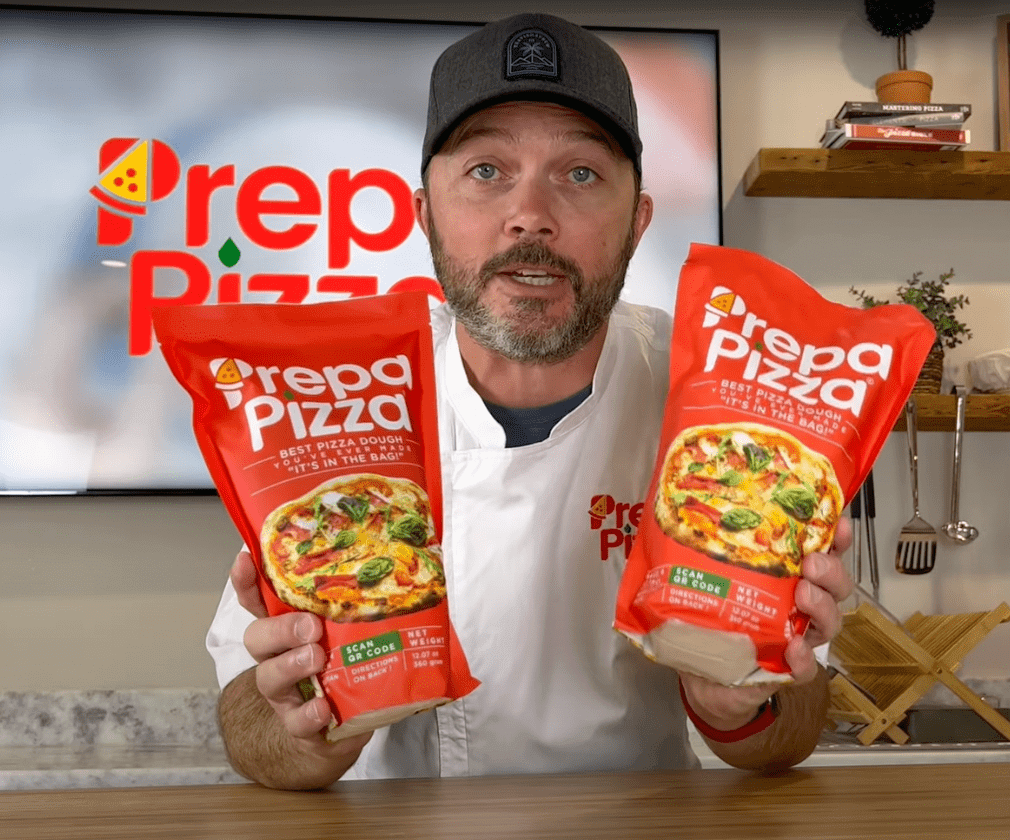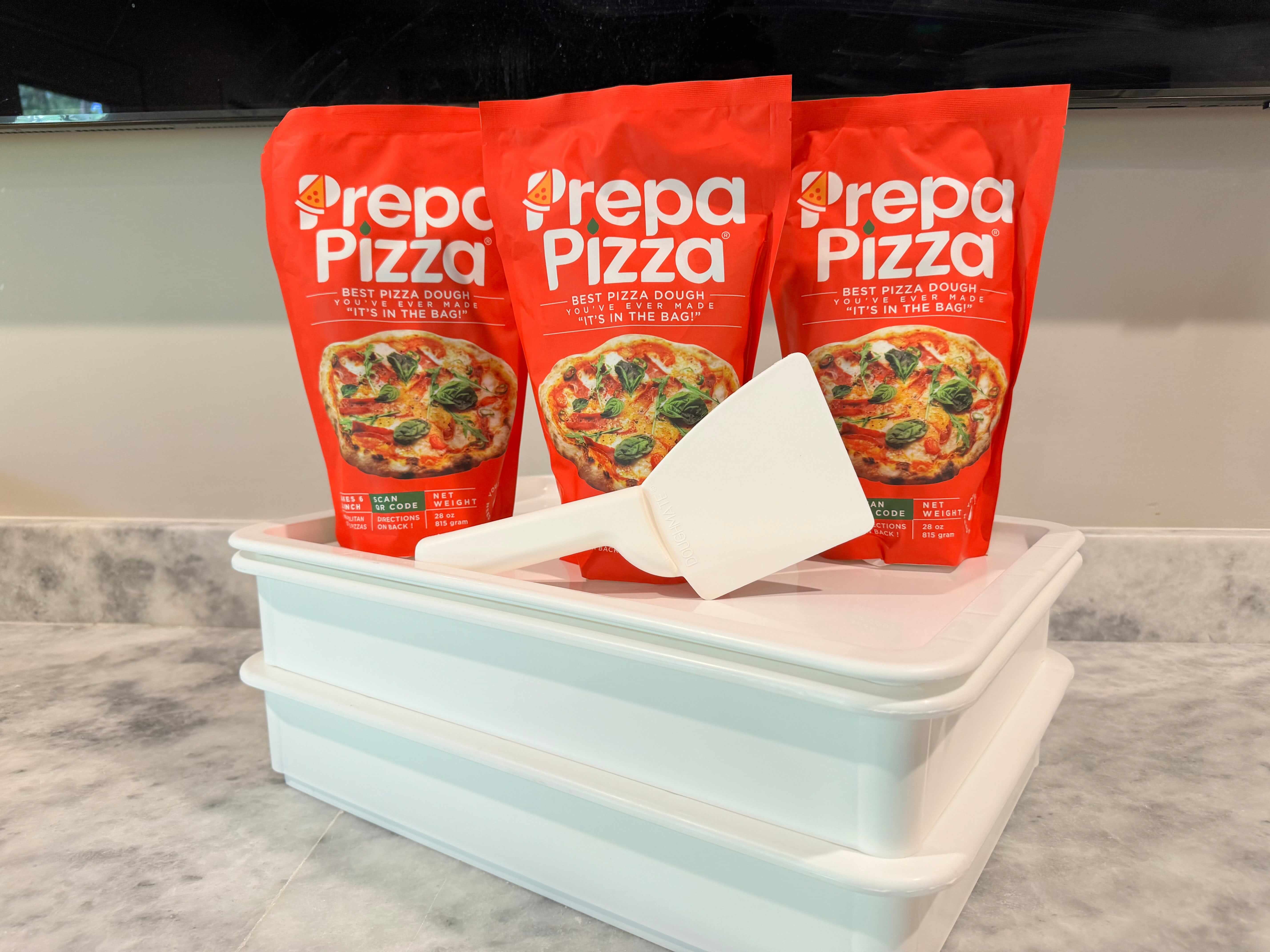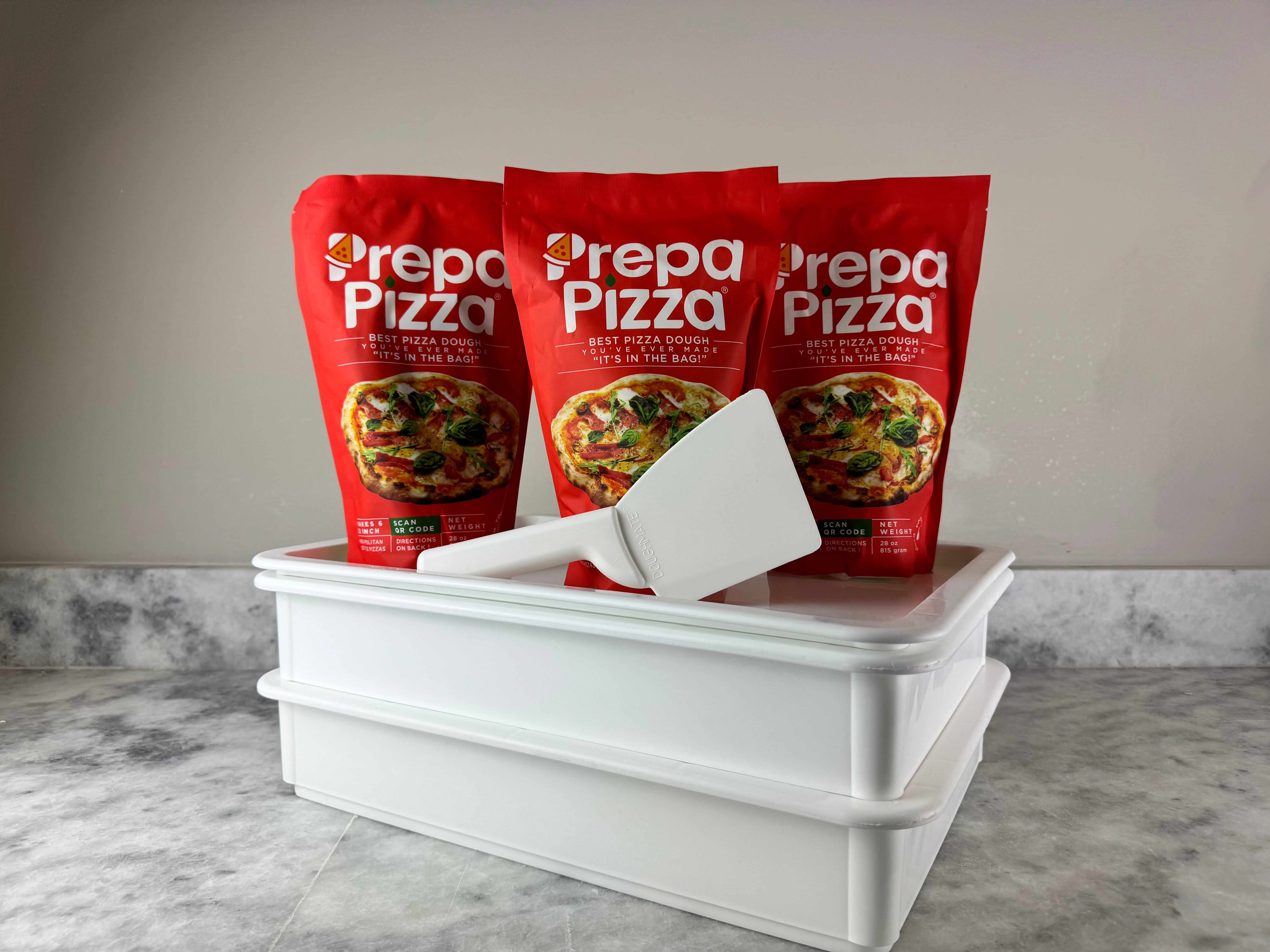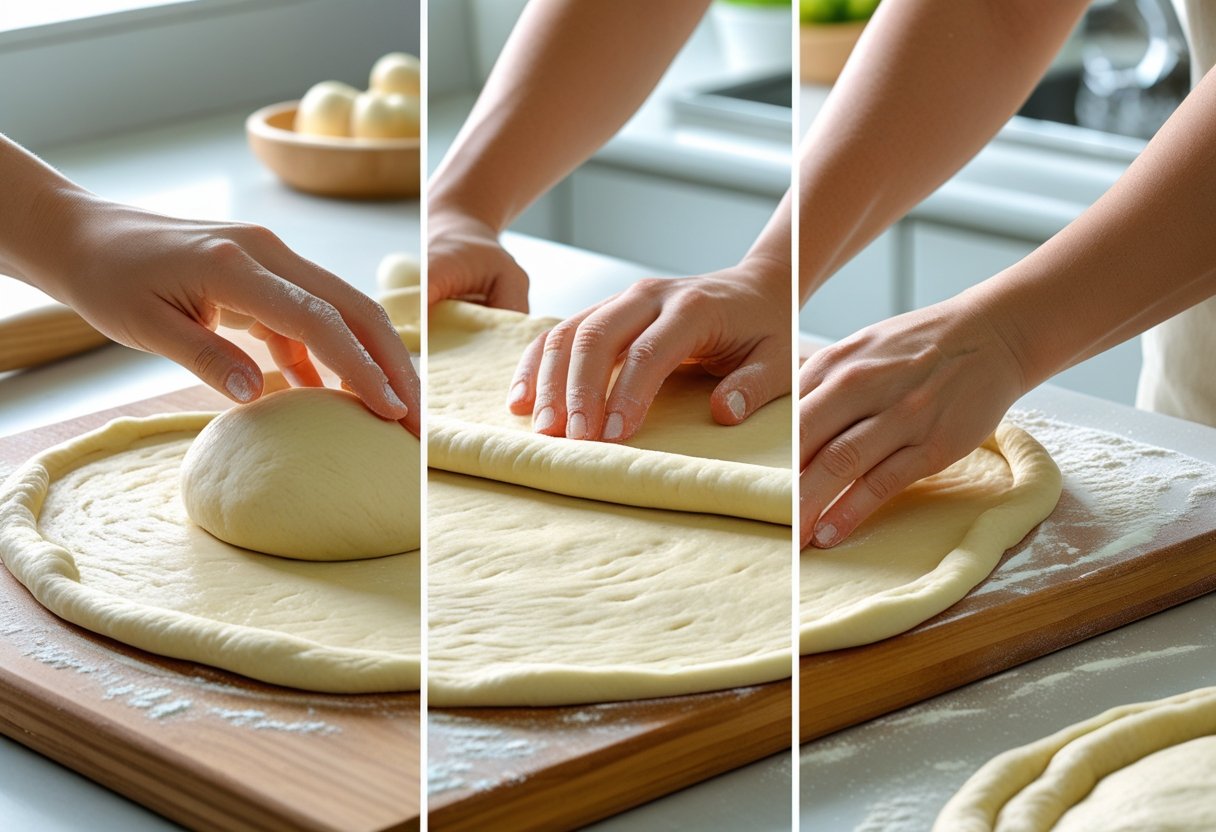
How to Stretch Premade Pizza Dough Without Tearing: Tips for Perfectly Rolled Dough Every Time
Stretching premade pizza dough can be a rewarding experience, transforming a simple base into a delicious culinary masterpiece. With Prepa Pizza's high-quality premade dough, achieving the perfect stretch is easier than you might think. To prevent tearing, start with room temperature dough and work gently to maintain its integrity.
One effective technique is to use a light dusting of flour on your work surface and hands. This will help to avoid sticking and allows you to work more freely with the dough. Pressing your fingertips into the center and gently stretching outwards will initiate the process without compromising the dough's structure. You can explore the benefits of using Prepa Pizza's premade dough for fantastic results.
Maintaining patience is also key; if the dough springs back, let it rest for about 15 minutes. This allows the gluten to relax, making it easier to stretch while preventing tearing. With these tips, you'll be on your way to creating the perfect pizza crust every time.
Understanding Pizza Dough Fundamentals
To successfully stretch premade pizza dough, it’s essential to grasp the core elements that contribute to its stretchability and overall structure. Key factors include the role of gluten, the required hydration level, and the type of flour used.
Role of Gluten and Elasticity
Gluten is a protein that forms when flour is mixed with water and kneaded. It creates a network that gives pizza dough its chewy texture and elasticity. This network allows your dough to stretch without tearing, which is crucial for achieving that perfect pizza crust.
The strength and development of gluten directly influence how elastic your dough will be. With Prepa Pizza's premade dough, the gluten is already well-developed, making it easier for you to work with. You can achieve a stretchy pizza dough with minimal effort, allowing you to create a thin, crispy crust.
Importance of Hydration Level
Hydration level refers to the amount of water in the dough relative to the flour. Higher hydration levels generally produce a softer, more elastic dough. This elasticity is essential for easy stretching, as it allows the dough to expand without cracking.
For optimal results, aim for a hydration level around 60-70%. If your dough feels too dry, it may snap back during stretching. Using Prepa Pizza's premade dough ensures the right balance of hydration, so you can focus on shaping your pizza rather than worrying about the dough's texture.
Effects of Type of Flour
The type of flour used significantly affects the final texture of your pizza dough. Bread flour, for instance, has a higher protein content than all-purpose flour, which contributes to stronger gluten development. This results in a more elastic and stretchable dough, ideal for pizza.
Choosing the right flour can make a difference in your pizza-making experience. With Prepa Pizza's premade dough, you get the benefits of a well-sourced flour that balances quality and performance, simplifying the process of making delicious pizzas at home.
Proper Dough Preparation Techniques
Effective dough preparation is crucial for achieving the perfect stretch without tearing. Focusing on factors like resting time, managing cold dough, and proper kneading methods can significantly enhance your results with Prepa Pizza's premade dough, which offers a premium quality foundation for your pizzas.
Correct Resting Time and Fermentation
Resting your dough is essential for developing the right texture. When using Prepa Pizza's premade dough, allow it to sit at room temperature for at least 30 minutes. This period lets the gluten relax, which prevents snapping back when stretched.
Fermentation plays a role in flavor and aroma. If you have time, let the dough ferment for up to an hour after the initial resting. This additional step not only enhances taste but improves the overall consistency, making it easier to manage during stretching.
Managing Cold Dough
Using cold dough can lead to a tough and unyielding texture, which is challenging to stretch. If you’ve stored your Prepa Pizza dough in the refrigerator, move it to room temperature at least one hour before use.
The warmth allows the gluten to relax and makes the dough more pliable. Check the dough for its elasticity; it should feel soft and slightly tacky but not sticky. This ideal consistency is crucial for achieving the perfect stretch while maintaining the dough's integrity.
Kneading and Folding Methods
Kneading and folding techniques are vital for preparing your dough. Begin by gently pressing the dough with your palms to create a flat surface. Fold the dough over itself and press down again to develop gluten structure without overworking it.
Use a technique called “stretch and fold” to help build strength. This method involves pulling the edges of the dough toward the center and turning it to repeat the process. Aim for a smooth, elastic consistency which will ensure a successful stretch later on. Proper kneading and folding will pave the way for creating that perfect pizza crust.
Step-by-Step Guide to Stretch Premade Pizza Dough
Stretching premade pizza dough can be simple and rewarding when you follow the right techniques. Using high-quality ingredients like those found in Prepa Pizza's premade dough will yield a perfect base for your homemade pizza. To get started, ensure your dough is at room temperature and ready for shaping.
Warming the Dough Safely
Before stretching, let your dough rest at room temperature for about 30 minutes. This allows the gluten to relax, making it easier to work with. If the dough feels cold, consider placing it in a warm area of your kitchen to accelerate the warming process.
If your pizza dough is resistant and shrinks back during stretching, it may need more rest. A 15-minute break can make a difference, allowing the gluten to rest and preventing tearing. Always handle your dough gently, ensuring you maintain its integrity.
Using Olive Oil to Prevent Sticking
To further ease the stretching process, use olive oil. Lightly coat your hands and the work surface with olive oil before handling the dough. This prevents sticking and helps create a smooth surface.
Avoid using flour excessively, as it can lead to a dry dough. Instead, a thin layer of olive oil allows you to grip the dough without it tearing. Just a small amount goes a long way in enhancing the dough's elasticity while you shape it.
Shaping the Dough Evenly
When shaping your dough, aim for a uniform thickness. Start by pressing the center with your fingertips, gently pushing outward. Rotate the dough as you go to maintain an even shape.
You can also gently stretch the dough with the back of your hands, allowing gravity to assist. If you notice any areas becoming too thin, use your fingers to push the dough back toward the center. By being deliberate in your movements, you minimize the risk of tearing and create the perfect foundation for your pizza.
By following these essential techniques with Prepa Pizza's premade dough, you can achieve a perfectly stretched base, ready for your favorite toppings.
Smart Stretching Strategies for an Even Crust
Achieving an even crust requires careful attention to technique. Utilizing gravity, handling the edges effectively, and controlling the amount of force you apply can make a significant difference in your results. With Prepa Pizza's premade dough, you have a high-quality foundation that is designed to stretch beautifully.
Utilizing Gravity Effectively
To stretch your pizza dough without tearing, leverage the power of gravity. Begin by holding your dough disk at the edge and gently allowing it to hang. This technique lets the weight of the dough work in your favor, promoting even stretching.
As you let gravity assist you, consider rotating the dough slowly. This motion helps distribute the weight, ensuring the crust remains uniform. Keep working from the center outwards, allowing the dough to expand naturally. Avoid pulling too hard; let gravity guide the process.
Handling the Edge for a Thin or Thick Crust
The edge of your dough plays a crucial role, especially when shaping for different crust types. If you prefer a thin crust, gently stretch the outer edge while keeping the center slightly thicker. This technique ensures a well-defined border without compromising the structural integrity of the base.
For a thicker crust, focus on maintaining a bit more dough along the edge. Press it out lightly, ensuring enough dough is left for a robust structure. With practice, you'll master how to adjust the thickness according to your preference while maintaining an even shape.
Controlling the Use of Force
Applying the right amount of force is key to avoiding tears in your pizza dough. Too much force can lead to breaks, especially when working with areas that are naturally thinner, like the center. Use light, consistent pressure when stretching.
Start with your palms and fingers to gradually expand the dough. If the dough retracts, let it rest for a few minutes before continuing. This patience allows the gluten to relax, making it easier to stretch without damage. With Prepa Pizza's quality dough, your efforts will yield a perfectly even crust that enhances your pizza experience.
Essential Tools and Tips for Pizza Dough Handling
Handling dough correctly is key to achieving the perfect pizza. Using the right tools and techniques can enhance your experience while working with Prepa Pizza's premade dough, designed for easy stretching and shaping.
Choosing and Using a Pizza Peel
A pizza peel is an indispensable tool for transferring your pizza to and from the oven. Opt for a wooden or metal peel, as both have unique advantages.
- Wooden Peels: They provide a natural surface that helps prevent sticking.
- Metal Peels: These are thinner and make sliding heavy pizzas easier.
To use a pizza peel effectively, sprinkle the surface with a light layer of cornmeal or flour to create a non-stick barrier. Once shaped, gently slide the pizza onto the peel. Practice the quick motion of thrusting the peel into the oven, which ensures a smooth transfer.
Prevent sticking by making sure your premade dough is well-floured before adding toppings.
Working with Cornmeal for Easy Transfer
Using cornmeal adds a crucial step for an effortless pizza transition. Cornmeal's coarse texture creates a non-stick surface that helps slide the pizza easily onto the hot stone or baking sheet.
To apply cornmeal:
- Dust Generously: Sprinkle cornmeal evenly on your pizza peel before placing your dough.
- Avoid Excess Moisture: If your dough is too wet, it can stick. The right hydration level is essential for stretching and transferring.
Cornmeal not only eases movement but also contributes a slight crunch when baked. This enhances the texture of your crust, taking your homemade pizza to a higher level.
For a great result, remember that Prepa Pizza's premade dough works beautifully with these tools and tips, ensuring you achieve a delicious pizza every time.
Frequently Asked Questions
Stretching premade pizza dough can be tricky, but with the right techniques and knowledge, you can achieve a perfect crust. Here are some common questions and answers that will help you navigate this process more effectively.
What techniques can prevent pizza dough from tearing when stretching it?
Using gentle pressure is key when handling pizza dough. Rather than pulling on the edges, press from the center outwards to maintain its elasticity. Allowing the dough to rest before stretching can also relax the gluten, making it less prone to tearing.
What are some effective methods to roll out pizza dough without it sticking?
Flouring your work surface lightly can prevent sticking. You can also use parchment paper to make rolling easier. If needed, a little olive oil on your hands and the dough can help as well, providing a non-stick surface without excess flour.
Is it possible to stretch pizza dough without using flour, and how?
Yes, you can stretch pizza dough without flour by using oil instead. Lightly coat your hands and the countertop with olive oil to prevent sticking. This method keeps the dough hydrated and avoids the addition of extra flour, which can toughen the crust.
What are the basic steps for beginners to stretch pizza dough properly?
Start with room temperature dough from Prepa Pizza for optimal stretching. Begin by pressing the center of the dough with your fingers, gradually working outwards. When you have a flat disc, lift and rotate the dough to stretch it further without tearing.
How can one prevent pizza dough from shrinking back when rolling it out?
Allow the dough to rest for 10-15 minutes before stretching. This resting period helps relax the gluten, reducing the likelihood of shrinkage. If it continues to shrink, let it rest for a few more minutes before trying again.
What are the best practices for using a rolling pin to stretch pizza dough thinly?
When using a rolling pin, roll from the center outwards with even pressure. Avoid rolling back and forth, as this can make the dough uneven. If you find the dough sticking, add a touch of flour or oil on the surface. Use light, consistent pressure to achieve the desired thickness.
With Prepa Pizza's premade dough, you can confidently use these techniques to create a delicious pizza base.





